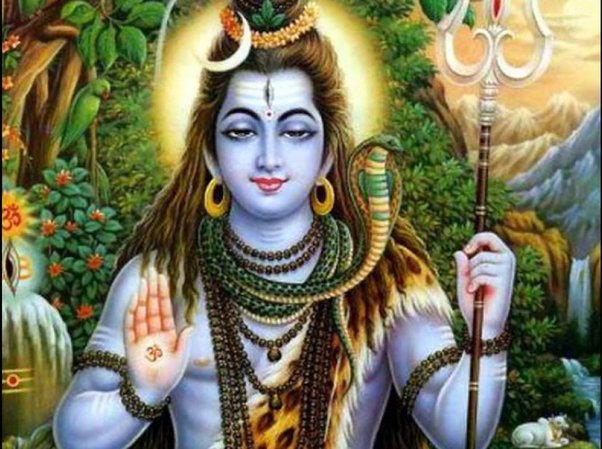Snakes. Snakes are everpresent in everyone’s lives. We read about snakes in our academics, we have seen snake sculptures in almost every temple we’ve been to, we have seen snakes depicted symbolically throughout the world across religions. Snakes are limbless squamates that belong to the reptilian order of Serpentes. A lot of Modern-day humans are known to have ophidiophobia and herpetophobia i.e. fear of snakes and reptiles. Ophidiophobia is among the most common phobias in the world, at the moment. But snakes are also among the most misunderstood beings on the planet and hence, I have decided to come up with a series, specially dedicated to serpents and their nature. This is the first part of a series of publications – audio and articles – that intends to provide insights about snakes, their importance to life, their importance to people’s culture and the eccentric meaning behind their symbolism throughout history.
Snakes and serpents can be found in almost every ancient culture as a symbol of life, spirit, enlightenment, etc. We still see snakes in modern medical symbols, derived from Rod of Asclepius and the Hermes’ Caduceus. The serpent, or snake, is one of the oldest and most widespread mythological symbols. Snakes have been associated with some of the oldest rituals known to mankind. Long before people’s fear of snakes came into existence, snakes were revered and regarded as creators and protectors of Earth. The total number of snake deities in ancient civilizations is extensive and the artefacts representing them were innumerable. All of this points to man’s close relationship with the snake, serpent and dragon which were generally regarded as the same. Snakes were considered benevolent before they became malevolent, specifically after the spread of Abrahamic and other monotheistic religions.
Since this will be a series of articles dedicated to the serpents and their importance in mythologies, let’s start with the land of snakes. India – historically called the land of snakes and snakecharmers. India, being home to a multidimensional theistic ideology – Hinduism – still worship snakes. But a reason for snakes having this symbolic status is because, according to mythology, when celestial beings – those who are consciousness and capability superior to human nature – entered worldly existence, they always took the form of a snake. This finds mention in every mythology on the planet.
The Importance of Snakes in Hindu Mythology
Snakes have played an important role in Indian mythology from time-immortal. They have been revered as eccentric symbols of wisdom, power, and immortality, and have been featured in various religious texts and stories. Ancient Indians both feared and revered the snakes. The tradition still continues. Hindus worship snakes in temples as well as in snakes’ natural habitats, offering them milk, and prayers.
In Hindu rituals and spiritual traditions, a snake is not an evil creature but a divinity representing eternity as well as materiality, life as well as death, and time as well as timelessness. Snakes symbolize the duality of life. A snake is among the rarest of rare beings to symbolize both the Dvaita and Advaita principles. It symbolizes the three creation processes: creation, preservation, and destruction. The Puranas mention several large serpentine deities like Kadru, Manasa, Vinata, and Asitka.
Hindu Mythology has numerous mentions of serpents, namely – How Gods and Demons used Vasuki to churn out Amritam, Stories about Sheshnag or Adishesha. The stories about snakes in Hindu Mythology are full of symbolism and are said to represent the struggle between good and evil, the triumph of good over evil, and the importance of cooperation and unity.
Hindu scriptures mention Nagas, a class of demigods or semi-divine living beings who live in the subterranean Hollow world, culturally referred to as Patala Lok ( பாதாளம் in Tamil ). By nature, snakes are good, but they can become destructive and vengeful if disrespected or not treated well. Hindus believe that curses and spells arising from aggrieved snake deities can result in misfortune, loss of health, death, loss of progeny, or childlessness, for which one is advised to perform purifying and expiatory rites. This is generally called Naga Dosha or Sarpa Dosha.

Snakes and Spirituality
Throughout the world and time, Snakes always played a big part wherever there was a spiritual exploration or experience of spirituality. Particularly, in the ancient cultures of India, Egypt, China, the Far East, Mesopotamia, and Cambodia.
Mysticism and Occultism are definitive dimensions of perception and the snake has come endowed with that capability. That is why the highest form of perception, which is the opening of the third eye in Shiva’s forehead, is punctuated by the presence of the snake. Below is a picture of Lord Shiva with his third eye open and a snake around his neck. This is one of the most recognizable pictures or pictorial representations in this country.

As we know, Hindu Mythology is written and depicted based on a dialectical representation of life. A snake around Shiva’s neck is shown to represent that Lord Shiva – the Supreme Yogi – considers the perception of the snake as similar to his. Historically, we know that the great temples of Angkor – Angkorwat and Angkor Thom in Cambodia were built by Naga descendants. The descendants went from India, intermarried with the indigenous Cambodian people, and established a kingdom. The Nagas were ruled by queens, not kings, as they were matriarchal families.
Human beings who are very deeply associated with snakes exist even today. You would have seen saints, Aghoris, snake charmers dealing with snakes just like that. Me, being one of them. If one becomes very meditative, the first being that is drawn towards that is a snake. This is the reason why you always see images of sages and seers with snakes around. It has such a sense of perception that it can perceive certain dimensions which human beings are longing for and desperate to know.
The snake is the first creature that will know even the slightest fundamental change that happens on this planet because the snake’s body is in touch with the ground. A snake has no ears; he is stone-deaf, so he uses his whole body as an ear. “Putting ears to the ground” is an idiom that was born out of a snake’s natural ability. Its’ sense of perception with regard to the planet is so very keen and sharp. It is true that snake charmers and the ones who are capable of living with snakes can predict earthquakes weeks ahead of actual incidence. It is because a snake behaves in a rampant way when that happens.

The above image, one of the most popular and recognizable images relating to the Hindu form of worship, can depict two different things – depending on the way you see it. One way of looking at it is the symbolic representation of entanglement in a relationship. The other way of looking at it is the symbolic representation of conscious involvement between two beings. Both may mean the same thing on a surface level but they are polar opposites in their meaning. Such is the nature of a snake.
Epilogue
In the coming compositions of this series, I will be writing about the importance of snakes in multiple ancient civilizations, what it means in Chinese Mythology, what it means in Greek philosophy, what it means in Buddhism, etc. The coming episodes will also include my thesis on how a snake is chemically ( scientifically and empirically ) attracted to a spiritual human, who are the naga descendants, how the benevolent snakes become malevolent in people’s perception, and much more.
Note – I am always open for a proper discussion – irrespective of who, what, and when ( except for the times I am involved in my work ). If you’d like to send me a message or ask me questions, send an email to [email protected].


